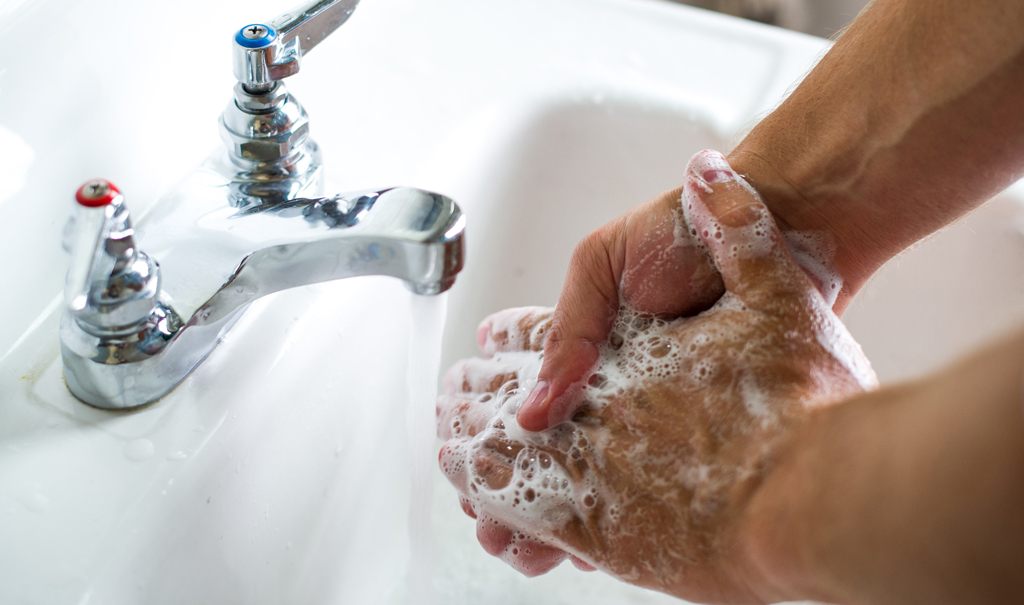
Can’t find antibacterial soap at the store these days? No need to worry, any type of hand soap can rid hands of germs and viruses such as COVID-19. That’s according to an expert at Baylor College of Medicine who has more tips on what to do to stay virus free.
Soap vs. antibacterial soap
“There doesn’t need to be any additives in soap to clean your hands of germs and viruses. Soap works by removing germs from your hands, and the antibacterial soap contains chemicals that may also kill the bacteria, but both result in germ-free hands,” said Isabel Valdez, a physician assistant and instructor of general internal medicine at Baylor Medicine.
The rule of thumb is to make sure you wash hands for at least 20 seconds before rinsing and to wash your hands often.
The reason to wash hands often is because most people are not aware of how much they actually touch throughout the day, and they don’t know if someone with COVID-19 has been touching those same items and surfaces.
If soap and water isn’t available, then hand sanitizer is a good alternative.
Hand sanitizer
“When it comes to hand sanitizer, you do need to make sure what the ingredients consist of, because you’re not washing off the germs like you do with soap and water but are instead inactivating the viruses that could be on your hands,” she said. Hand sanitizer ingredients should include at least 60% ethanol, a type of alcohol.
But what if you can’t find hand sanitizer either?
“You can find some recipes online that explain how to make your own; however, it is easy to get the proportions wrong, which lessens the antimicrobial effect,” Valdez said.
The standard recipe found online includes 2/3 cups of 91% isopropyl alcohol, commonly found at drug stores, and 1/3 cup of aloe gel. Some recipes call for essential oils, but this is where Valdez says people can go wrong.
“Once you start adding ingredients, or perhaps get the proportions off here or there, you start to dilute the effectiveness of the homemade hand sanitizer,” she said.
Ultimately the recommendations are to use alcohol based products to sanitizer the hands. Hydrogen peroxide is not as effective as alcohol.
Cleaning surfaces
To disinfect items, make sure your cleaner contains bleach. If you cannot find disinfecting solution, the CDC recommends 1 cup of household bleach in 5 gallons of clean water. This will make a lot of solution that you can pour into multiple spray bottles to keep throughout your home.
High-touch areas should be cleaned often but don’t forget about all the extra items and areas you might touch without realizing. Pay attention to what you touch in a small time frame and this will help you realize that you might be touching things throughout the day that you are not aware of.
“Right now we don’t know exactly how long COVID-19 stays on surfaces. It is believed to stay anywhere from a few hours to a few days. I’ve even read some studies that suggest up to 9 days,” Valdez said.
Bottom line, Valdez said, is wash your hands and clean everything often.
What to disinfect
Here is a reminder of just a few common items to disinfect, but don’t forget to be aware of what you touch and continue to add to this list. (Click here for a video reminder.)
- Keys
- Wallet
- Purse or bag handles
- Credit cards
- Stair railings
- Doorknobs and/or turn keys
- Light switches and/or pulls
- Steering wheel and other knobs and handles in your vehicle
- Keyboard and mouse
- Charging cables
- Cell phone
- Work phone
- Makeup and brushes
- Eye glasses
- Remote controls
- Wash bedsheets and towels







